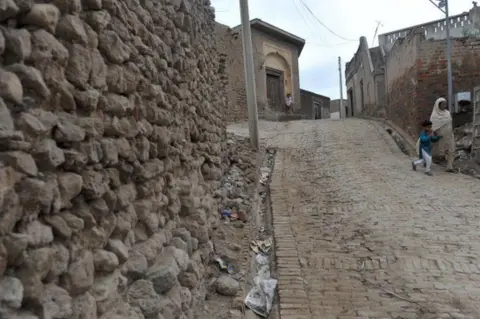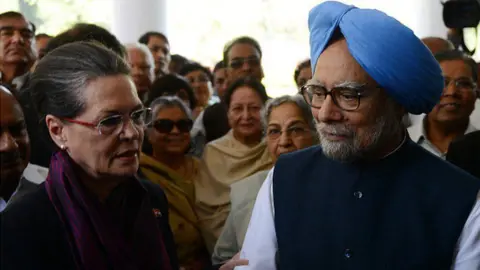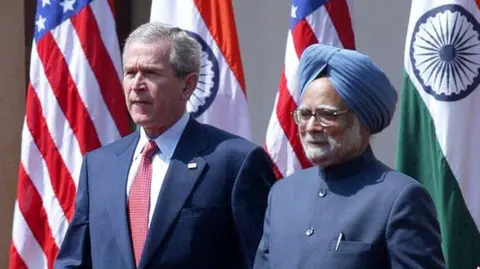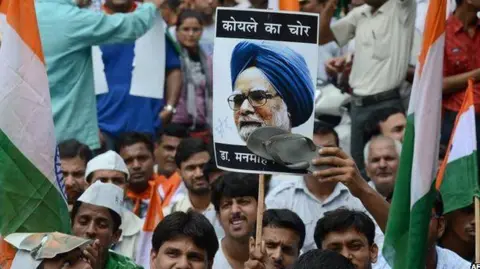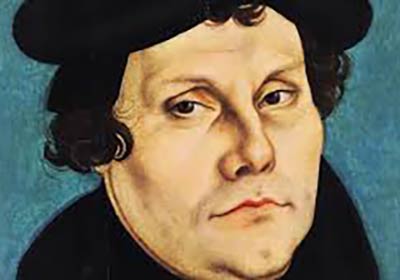BY Saumya Liyanage
(Text of a keynote address delivered at the annual Diploma Certificate Award Ceremony, organised by the National Photographic Art Society, Sri Lanka, on the 26 October 2024)
When a photograph of the main protagonist, Joseph, in the play Antique Kadayaka Maranayak (‘Death in an Antique Shop’), written and directed by Asoka Handagama, was shared on Facebook, a much awaited discussion erupted among theatregoers on how this image captured the true essence of the play. The playwright and director Handagama had also commented on Facebook, stating that the photographer, Sagara Lakmal de Mel, has captured the ‘full coverage of the play’ (Handagama, Facebook, 4th June 2023). This statement and the comments received for the Facebook post aroused a question of how photography links with theatre. How could a still image depict the essence of a play? Why is a still image of a play so important for us to understand the nature of acting, mise en scène, and other aspects of theatre?
Theatre photography has not been a major interest of the Sri Lankan photographers who capture the actors’ work on stage. It is very seldom that theatre productions are being captured by photographic documentation with a purpose of archiving and research. Photographers who are involved with theatre productions very often think of documenting theatre performances for the sake of documenting the “event” rather than systematically capturing the essence of the live performance. This paper therefore intends to explore the affinity between photography and theatre. Though these two art forms seem categorically different from each other, this short write-up attempts to suggest a convergence between these two art forms or, rather, sheds light on how these two art forms can be intermingled.
One of the fundamental questions that triggered my mind on photography is why photography is important for us to consider as a reflection of our own world and time. Some of the key features of photography include providing us with memories, preserving the past and our human and natural histories, capturing what we perceive as reality around us, and representing the lives of both humans and animals. Some experts say that photography captures time, memory, duration, presence, love, loss, mourning, and nostalgia. I am aware that photography is an industry. It is a commercial industry where people can make lots of money out of it. However, my question does not comply with the photographic industry but is directed towards the art of photography or the “ontological desire” of photography.
As an actor, I have been fascinated by the presence, absence, and the embodiment of meanings in images. In theatre arts, presence and absences are key elements in a live performance. As Peggy Phelan argues, ‘Performance’s only life is in the present […] The document of Performance […] is only a spur to memory, an encouragement of memory to become present’ (Phelan 1993, p. 146). The nature of live theatre is thus always ephemeral. But photography captures images and preserves them in a particular time and space. However, in terms of its presence and absence of images, photography shares the same phenomenological implications with theatre.
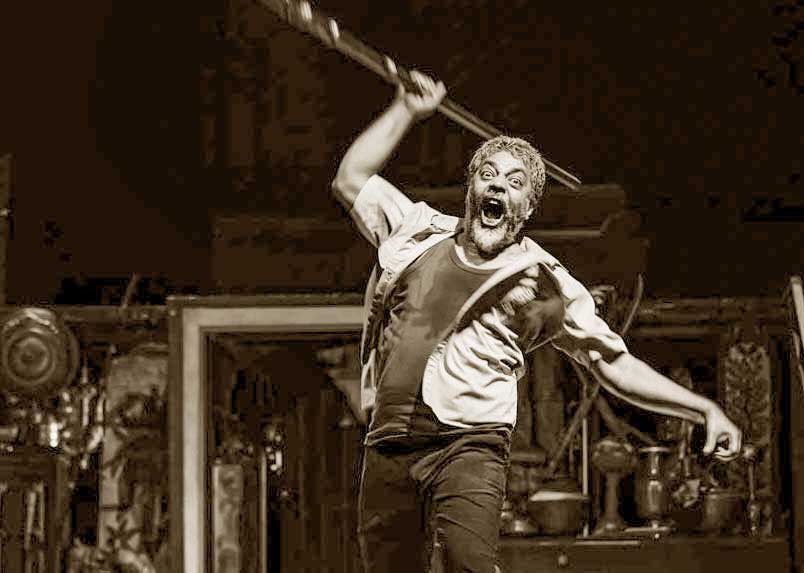
This image of Saumya Liyanage in the play Antique Kadayaka Maranayak (Death in an Antique Shop), shared on Facebook, provoked debate. Photo credit: Sagara Lakmal de Mel.
It is vital for me to emphasise the phenomenological implications of photography because the young generation of photographers should at least be aware of the breadth and depth of the art they use. As you may know, one of the classical writings on photography is Camera Lucida: Reflections on Photography, written by French philosopher and semiotician Roland Barthes. In this collection of essays, Barthes articulates his ideas on photography and shows us how the majority of theorists see resemblances between photography and paintings. However, Barthes argues that photography is more directly linked with theatre than visual art or painting. ‘Photography is a kind of primitive theatre, a kind of Tableau Vivant, (a tableau vivant is a static scene containing one or more actors or models), a figuration of the motionless and made-up face beneath which we see the dead’ (Barthes, 1993, pp. 31-32).
After watching Brecht’s play Mother Courage and Her Children in Paris, Barthes wrote an important paper titled ‘Seven Photo Models of Mother Courage.’ In this essay, Barthes had selected seven photographs taken during the staging of Mother Courage. During this performance, a photojournalist named ‘Pic’ had taken a series of photos using a telephoto lens that captured the vital moments of the play. Another essay written by Barthes titled “Diderot, Brecht, Eisenstein” (1973) further widened his discussion about the value of photography in analyzing mise en scène of the play.
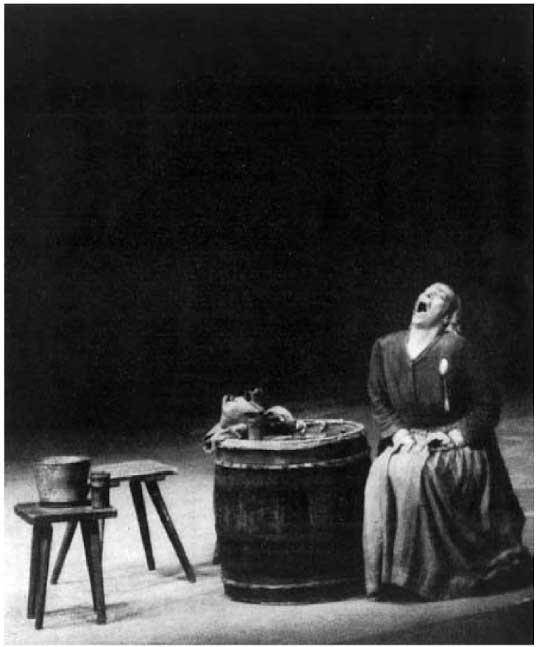
German Actor, Helen Weigal’s ‘Silent scream’ in Mother Courage and Her Children by Bertolt Brecht. The image was captured by a photojournalist in 1957 when Berliner Ensemble staged the play for the second time in Paris.
Barthes argues that when studying Brecht’s plays, it is important to focus on the “Pregnant Moments” of the scenic situations. Photography as a medium of capturing these “Pregnant Moments” is vital to understanding the tableaux. ‘In so doing, photography would function as a technology for the recording of the tableaux created by the playwright /metteur-en-scène’ (Carmody, 1990, p. 31). When studying Brecht’s plays, this tableaux represents Brecht’s key concept of gestus (a gesture, or a set of gestures that can be read as a social demeanor of a character).
The idea of Tableau Vivant is vital for us to further understand how this still photograph is linked with theatre and its theatrical presence. Theatre is performed in a particular space and time, with actors and additional auxiliary arts such as costumes, sets, lighting, and makeup. Thus, theatre is a series of photographic images, connected to each other as ‘animated photographs’ revealing human behaviour within the chosen time and space. The photographic frame is replaced in theatre by the proscenium arch, limiting our perception within the given scenic situation. Even though theatre showcases animated human figures and objects, it is a series of imagery in which the frozen images of humans and other objects are placed and choreographed to make meaningful situations. As Barthes suggests, photography is thus a “primitive theatre,” a tableau of human figures, and also a “made-up face” beneath which we see the “dead” (ibid, 1993).
How do we understand Barthes’ analysis of tableau figures in photographs as the representation of death? Barthes uses a metaphor here to discuss how the subjects in photographs represent death by referring to traditional Asian dance dramas such as Noh, Kabuki, and Kathakali. In these traditional theatres, actors appear with heavy makeup and costumes. In most of the traditional shamanic performances, the shaman represents both the death, demonic spirits, and the living at the same time. The Sharman also appears in front of the audience, the villagers with the painted faces signifying his performative nature of living and the dead.
Thus, Barthes concludes that the human tableau figures presented in photographs are similar to Sharman, who perform death and being with living on the same plain. Now, for me, photography is something theatrical and performative through which the photographer animates her/his figures in the stillness. Photographs present performative elements through their objects and animate them in our perceptual world. Though they appear as still images, they are masked with dead as Barthes postulates and ignite certain referents and generate meanings. As I have argued, theatre and photography are interrelated arts. There are many scholars who have studied the convergences of theatre and photography, and at the same time, philosophically there are some differences pertaining to these forms of art (Carmody, 1990). It is clearly evident that photography has been an integral part of the development of modern theatre. Scholars who have studied early 19th and 20th century modern theatre in the West and East have used photographic images as references to study the nature of theatre at the time. Photography thus has preserved the historical development of theatre and its culture in diverse countries and nations.
Today, we live in a world where photographic images are part and parcel of our daily realities. We all are, to some extent, photographers whose digital apparatuses are in action all the time. We all have the privilege of documenting and creating images of what we like and dislike. Further, we have the chance to display our images on various social media platforms. Our daily lives are becoming more and more visually transformed realities, and our narcissism is to capture our own lives and display them for the consumption of others. As Karel Vanhaesebrouck argues, ‘Not only is the impact of a camera fundamentally theatrical from the moment it selects a fragment of reality, but our society and its day-to-day organisation function along theatrical lines’ (Vanhaesebrouck, 2009).
References
Barthes, R. (1993). Camera Lucida: Reflections on Photography. London: Vintage Books.
Carmody, J. (1990). Reading Scenic Writing: Barthes, Brecht, and Theatre Photography. The Journal of Dramatic Theory and Criticism, 5(1), 25–38.
Barthes, R. and Bernays, H.F. (1967). Seven Photo Models of ‘Mother Courage’. TDR (1967-1968), 12(1), p.44. doi:https://ift.tt/Msn9G1g.
Vanhaesebrouck, K. (2009). Theatre, performance studies and photography: a history of permanent contamination. Visual Studies, 24(2), 97–106. https://ift.tt/rs3qcx6
(Saumya Liyanage is an actor and professor in drama and theatre, currently working at the Department of Theatre Ballet and Modern Dance, Faculty of Dance and Drama, University of Visual and Performing Arts, Colombo.)
from The Island https://ift.tt/F0RE37K

